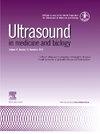超声和横波弹性成像评估下肢神经僵硬和偏移的可靠性:系统回顾和荟萃分析。
IF 2.4
3区 医学
Q2 ACOUSTICS
引用次数: 0
摘要
本研究旨在评价超声和超声弹性成像通过下肢神经横波弹性成像(SWE)评估神经偏移和刚度的可靠性和方法学质量。根据系统评价和荟萃分析的首选报告项目(PRISMA)指南,对MEDLINE、Scopus、Web of Science、CINAHL和SPORTDiscus数据库进行了系统评价,涵盖了2014年至2024年的出版物。在最初确定的270项研究中,有26项符合资格标准,共涉及778名参与者和1448条神经。可靠性指标包括类内相关系数(ICC)、测量标准误差(SEM)和最小可检测变化(MDC)。我们对坐骨神经和胫骨神经进行了meta分析,纳入了SWE和b超研究的数据。坐骨神经SWE的综合ICC为0.96 (95% CI: 0.93-0.98, I²= 25.6%),可靠性极佳。对于胫骨神经,ICC因体位而异,仰卧位和俯卧位的ICC为0.87 (95% CI: 0.75-0.99, I²= 84.2%),负重和侧卧位纵向偏移的ICC为0.96 (95% CI: 0.94-0.98, I²= 1.5%)。亚组分析显示两组间无显著差异。该系统综述和荟萃分析支持SWE在评估坐骨和胫骨神经僵硬以及胫骨神经在特定位置偏移时的可靠性。然而,这些发现应该谨慎解释,因为关于隐神经和股神经的证据仍然有限。本文章由计算机程序翻译,如有差异,请以英文原文为准。
Reliability of Ultrasound and Shear Wave Elastography in Assessing Lower Extremity Nerve Stiffness and Excursion: A Systematic Review and Meta-Analysis
This study aimed to evaluate the reliability and methodological quality of ultrasonography and ultrasound elastography in assessing neural excursion and stiffness through shear wave elastography (SWE) of lower extremity nerves. Following the Preferred Reporting Items for Systematic Reviews and Meta-Analyses (PRISMA) guidelines, a systematic review was conducted across MEDLINE, Scopus, Web of Science, CINAHL, and SPORTDiscus databases, covering publications from 2014 to 2024. Out of 270 studies initially identified, 26 met the eligibility criteria, involving a total of 778 participants and 1,448 nerves. Reliability metrics included intraclass correlation coefficients (ICC), standard error of measurement (SEM), and minimal detectable change (MDC). Meta-analyses were performed for the sciatic and tibial nerves, incorporating data from studies employing SWE and B-mode ultrasonography. The pooled ICC for SWE in the sciatic nerve was 0.96 (95% CI: 0.93–0.98, I² = 25.6%), indicating excellent reliability. For the tibial nerve, ICCs varied by position, with an overall ICC of 0.87 (95% CI: 0.75–0.99, I² = 84.2%) for supine and prone positions and 0.96 (95% CI: 0.94–0.98, I² = 1.5%) for longitudinal excursion in weight-bearing and side-lying positions. Subgroup analyses revealed no significant differences between the two groups. This systematic review and meta-analysis support the reliability of SWE in assessing sciatic and tibial nerve stiffness, along with tibial nerve excursion in specific positions. However, these findings should be interpreted with caution, as evidence for the saphenous and femoral nerves remains limited.
求助全文
通过发布文献求助,成功后即可免费获取论文全文。
去求助
来源期刊
CiteScore
6.20
自引率
6.90%
发文量
325
审稿时长
70 days
期刊介绍:
Ultrasound in Medicine and Biology is the official journal of the World Federation for Ultrasound in Medicine and Biology. The journal publishes original contributions that demonstrate a novel application of an existing ultrasound technology in clinical diagnostic, interventional and therapeutic applications, new and improved clinical techniques, the physics, engineering and technology of ultrasound in medicine and biology, and the interactions between ultrasound and biological systems, including bioeffects. Papers that simply utilize standard diagnostic ultrasound as a measuring tool will be considered out of scope. Extended critical reviews of subjects of contemporary interest in the field are also published, in addition to occasional editorial articles, clinical and technical notes, book reviews, letters to the editor and a calendar of forthcoming meetings. It is the aim of the journal fully to meet the information and publication requirements of the clinicians, scientists, engineers and other professionals who constitute the biomedical ultrasonic community.

 求助内容:
求助内容: 应助结果提醒方式:
应助结果提醒方式:


